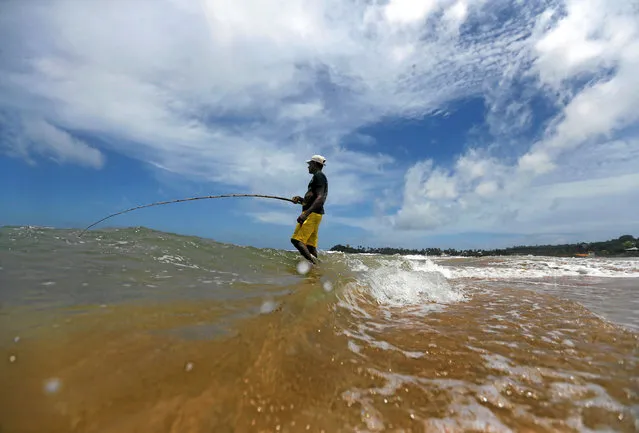
A man holds his fishing rod as he waits to catch fish on the beach in Galle, Sri Lanka May 29, 2016. (Photo by Dinuka Liyanawatte/Reuters)
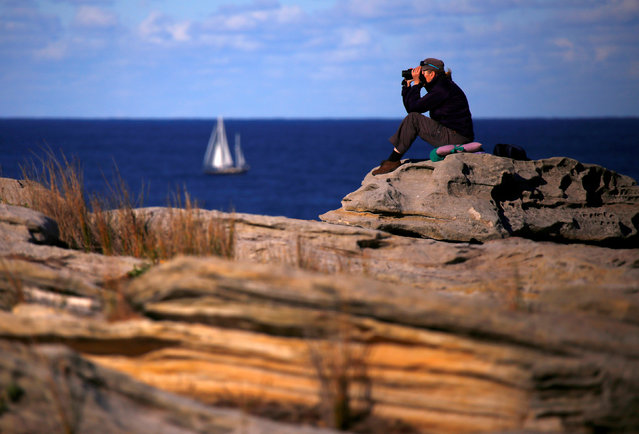
A boat sails behind a woman looking through binoculars as she sits on a cliff on a sunny day in Sydney, Australia, May 29, 2016. (Photo by David Gray/Reuters)
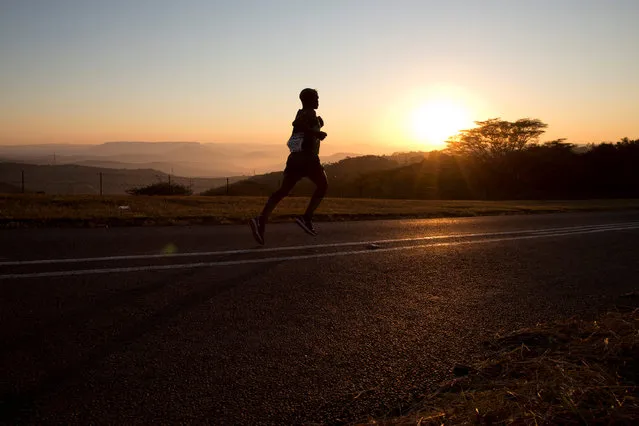
A runner competes in the Comrades Marathon run at Camperdown, South Africa, May 29, 2016. (Photo by Rogan Ward/Reuters)
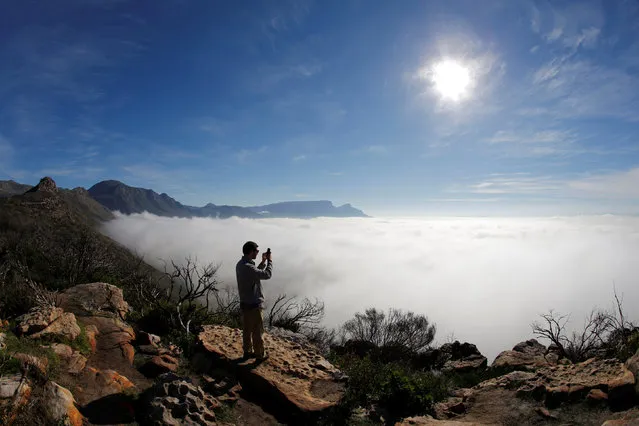
A visitor takes photographs from the scenic Ou Kaapse Weg as seasonal fog covers the city in Cape Town, South Africa, May 29, 2016. (Photo by Mike Hutchings/Reuters)
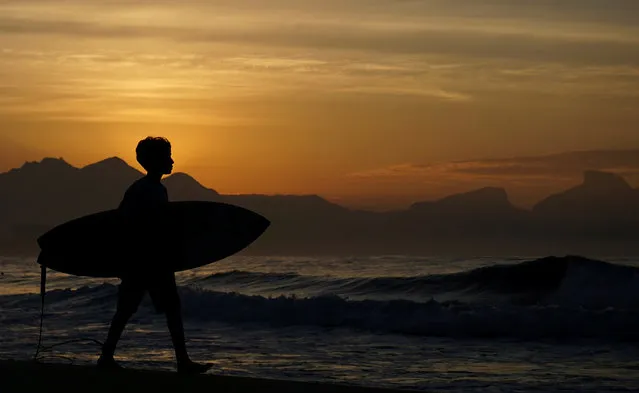
A young surfer walks on Recreio dos Bandeirantes beach in Rio de Janeiro, Brazil, May 29, 2016. (Photo by Sergio Moraes/Reuters)
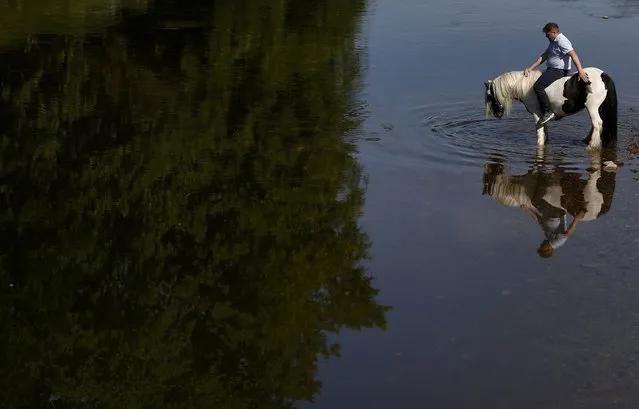
A member of the traveller community washes his horse in the river Eden during the horse fair in Appleby-in-Westmorland, northern Britain, June 3, 2016. (Photo by Phil Noble/Reuters)
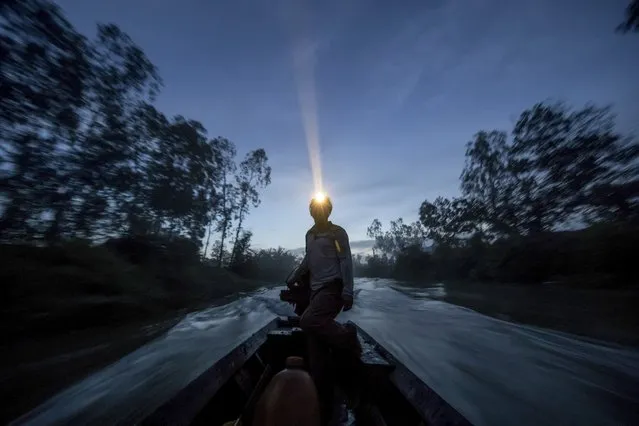
Huynh Anh Dung, a farmer, takes his boat to his family's rice farm where crops died from a drought in Nga Nam District, Soc Trang Province, Vietnam, May 17, 2016. (Photo by The New York Times)
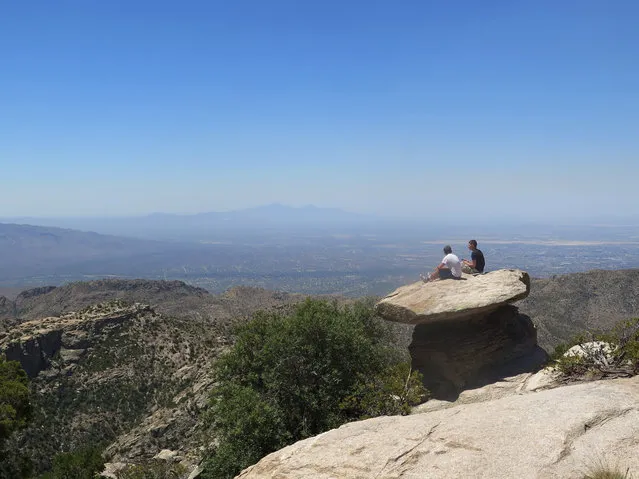
In this Friday, June 3, 2016 photo at Mount Lemmon, just north of Tucson, Ariz., students sit on a large rock overlooking the landscape. Many in Tucson escape to Mount Lemmon as temperatures rise to triple-digits, heading warnings of excessive heat. Mount Lemmon is the highest point in the Santa Catalina Mountains and offers temperatures that are on average 20 degrees cooler than the city. (Photo by Astrid Galvan/AP Photo)
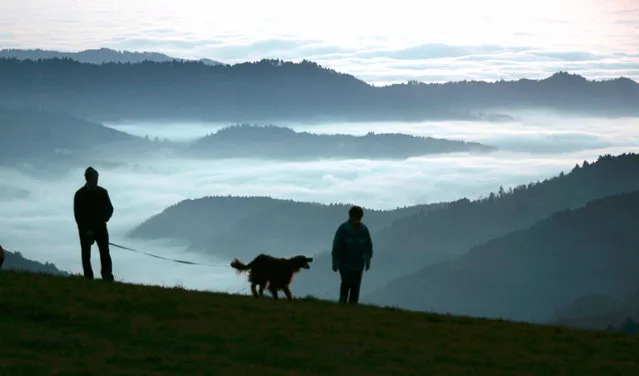
In this November 13, 2005 file photo, a man and a woman walk their dog along the mountain Schauinsland near Freiburg, southern Germany, with fields of fog in the Rhine valley. The long-debated question of where dogs first appeared has always been complex, and now a new study suggests it may have two answers. Dogs arose from the domestication of wolves, and research released Thursday, June 2, 2016 by the journal Science suggests this happened twice, once in Asia and also in either Europe or the Near East. (Photo by Winfried Rothermel/AP Photo)
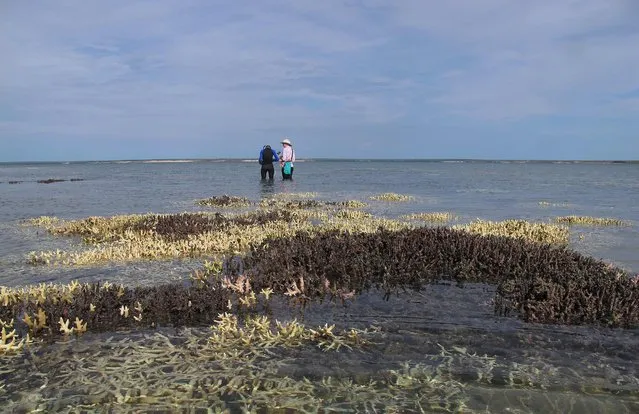
An undated handout photo received on May 30, 2016, shows dead coral in shallow waters at Cygnet Bay in Western Australia. At least 35 percent of corals in the northern and central regions of Australia's Great Barrier Reef are dead or dying from a mass bleaching event, scientists said on May 30, 2016. The assessment was made after months of aerial and underwater surveys after the worst bleaching in recorded history first became evident in March as sea temperatures warm. (Photo by AFP Photo/Stringer)
05 Jun 2016 13:33:00,
post received
0 comments
